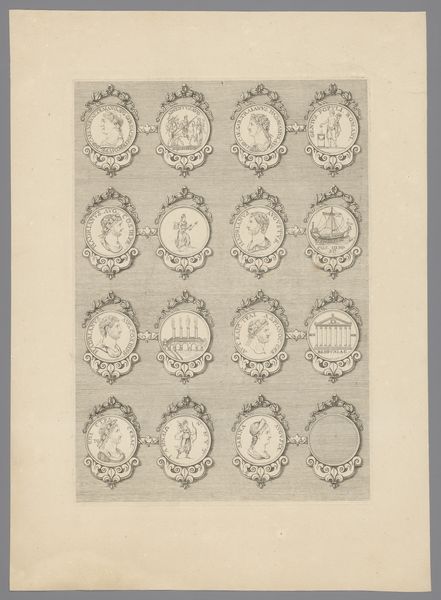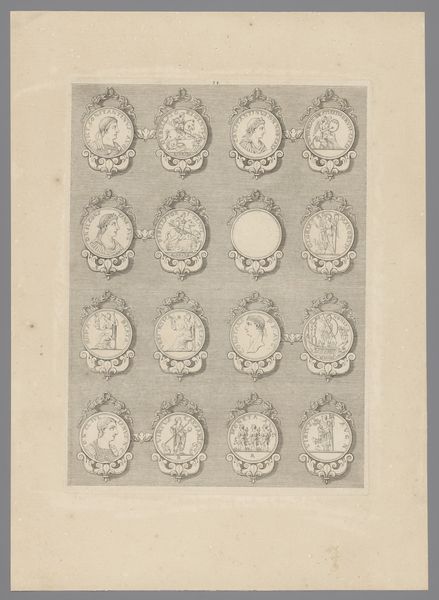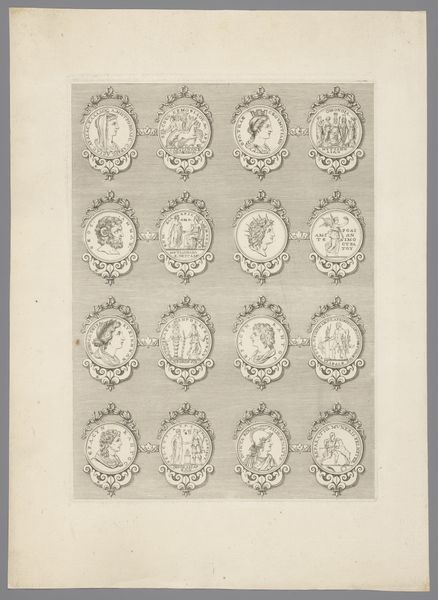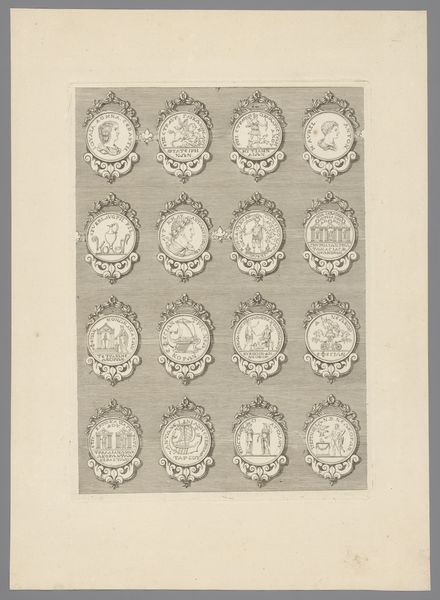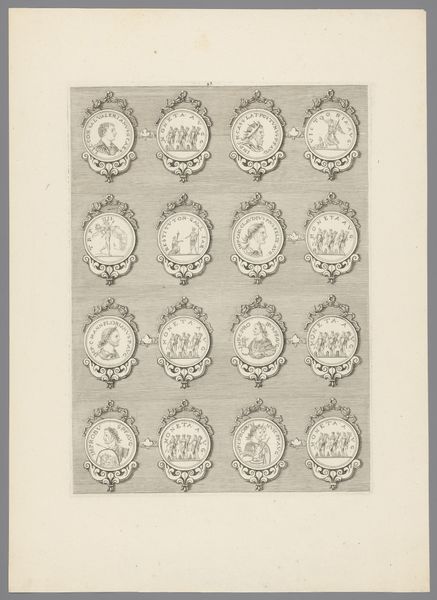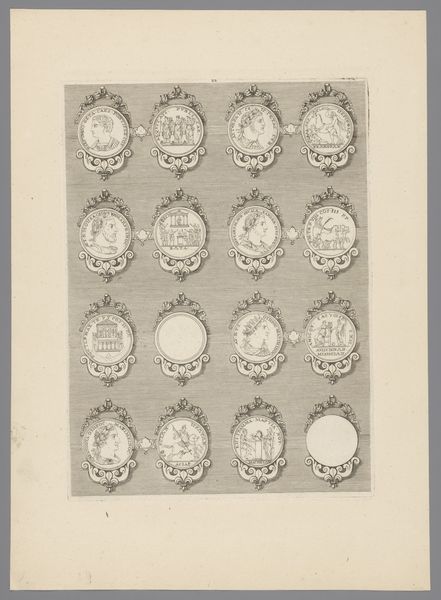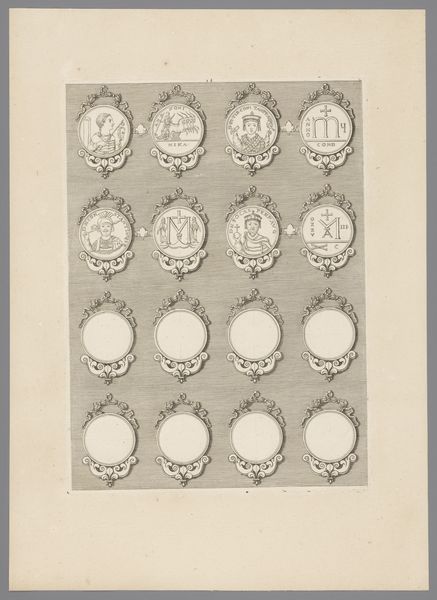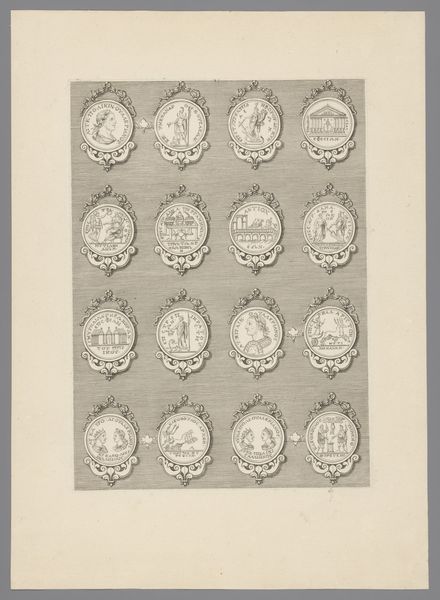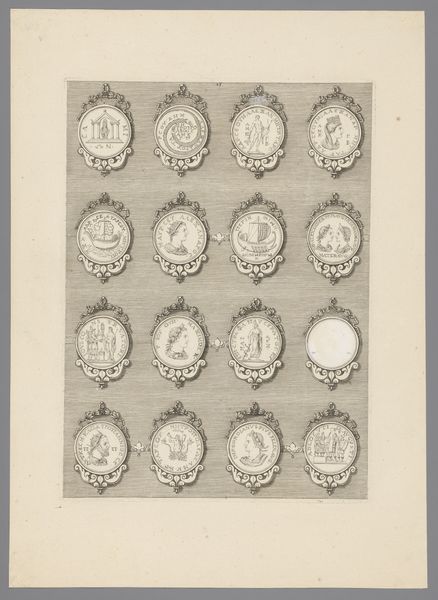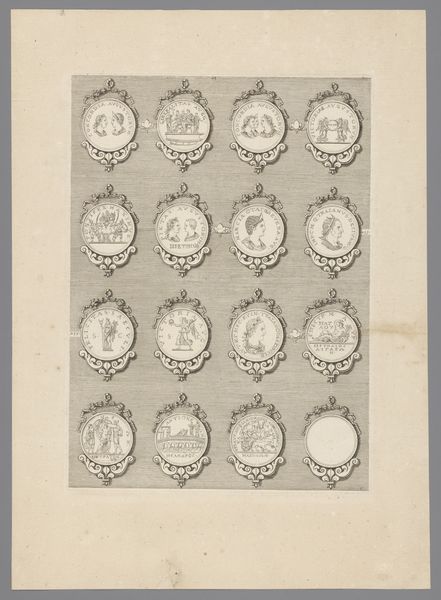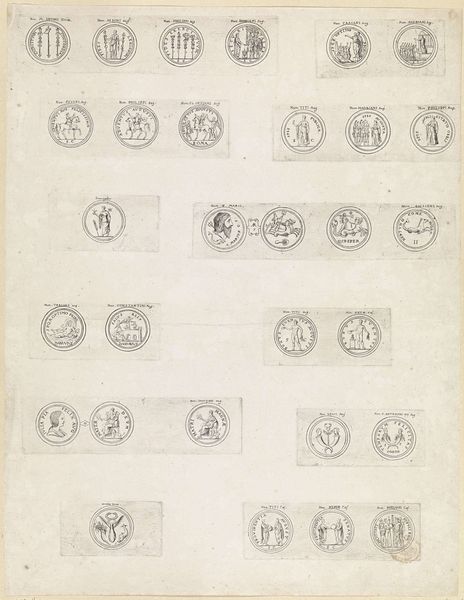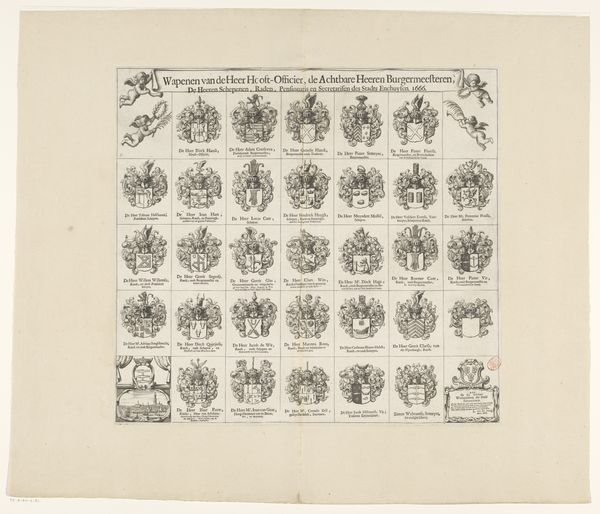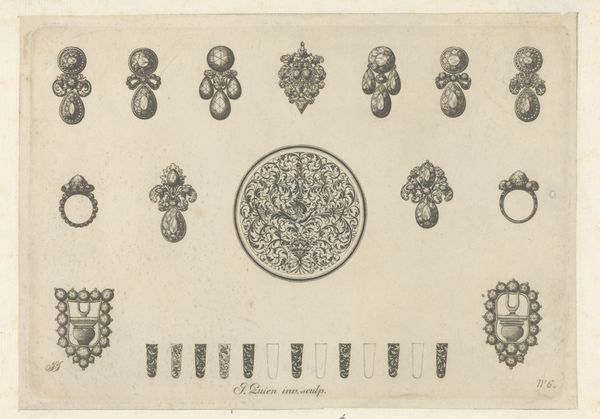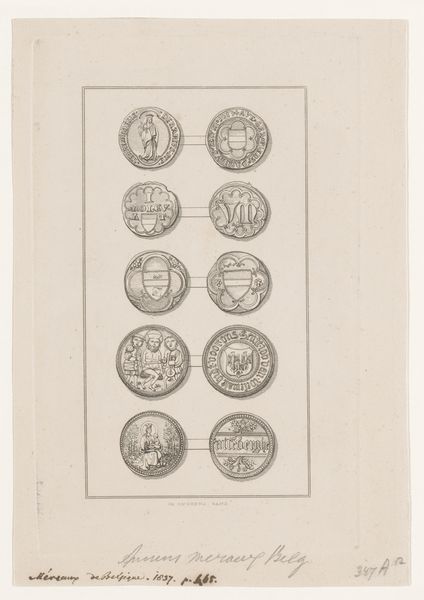
print, paper, engraving
#
portrait
#
baroque
# print
#
paper
#
history-painting
#
engraving
Dimensions: height 410 mm, width 287 mm
Copyright: Rijks Museum: Open Domain
Editor: So, here we have “Sixteen Pennies with Decorated Frames,” made between 1647 and 1682 by Simon de la Boissière. It’s an engraving on paper, which is interesting in itself given the timeframe. I am curious about these small circular images with ornate frames - what strikes you about it? Curator: I find it significant that these are *prints*. Not unique works of painting or sculpture, but reproducible images. The choice of engraving, a process demanding skill and time, allows for dissemination, for creating a visual language accessible beyond elite circles. Look at the frames, too – they are elaborate, yet standardized. The labor involved in creating the plates and paper speaks volumes. What can sixteen reproducible medallions, instead of only one original artwork, suggest about production and consumption at the time? Editor: That’s a good point about accessibility and standardization. Each of these little pictures could be a painting by itself, but it is reproduced here! It also gives an overview of diverse subject matter in a singular piece. Curator: Exactly. The material conditions – the printmaking process, the availability of paper – influence not just the form, but the very *idea* of art. Consider the social context. What role did prints play in spreading ideas and narratives during this period? And who would have been consuming these images? Editor: Perhaps a more middle-class audience than usual. Someone who couldn't afford to commission a painting but still wanted art. Curator: Precisely. And consider what messages these particular scenes may have been intended to send this patron demographic, not a historically wealthy family! Do you notice any that recur? How are labor and the distribution of power displayed or implied here? Editor: It changes how I see this. At first, I was interested in what was being portrayed, but now I’m thinking about who was able to access these images. Curator: It reveals a fascinating shift in the art world - the creation and distribution enabled by this reproductive process, challenging older aristocratic models.
Comments
No comments
Be the first to comment and join the conversation on the ultimate creative platform.
